How To Tell How Much Transmission Fluid To Add
Automatic transmissions can run reliably for tens of thousands of miles without needing whatsoever significant service. The transmission itself is total of fluid that keeps everything running smoothly. The transmission transfers all of the power coming from the engine to the wheels, and so if the parts inside experience likewise much friction then something volition somewhen fail. To avert this, yous tin use the transmission fluid dipstick to monitor the level of fluid within of the automated transmission and, if necessary, add fluid to the manual.
Some newer vehicles do non have an accessible dipstick or may have a fluid level sensor and should exist checked by a professional if the level is suspected to be low.
- Note: Some manufacturers exercise not recommend that the transmission fluid be changed for the life of the transmission and practise not have a normal fill or level checkpoint in the engine compartment.
Part 1 of 2: Checking automatic manual fluid
Materials Needed:
- Gloves
- Paper towels or rags
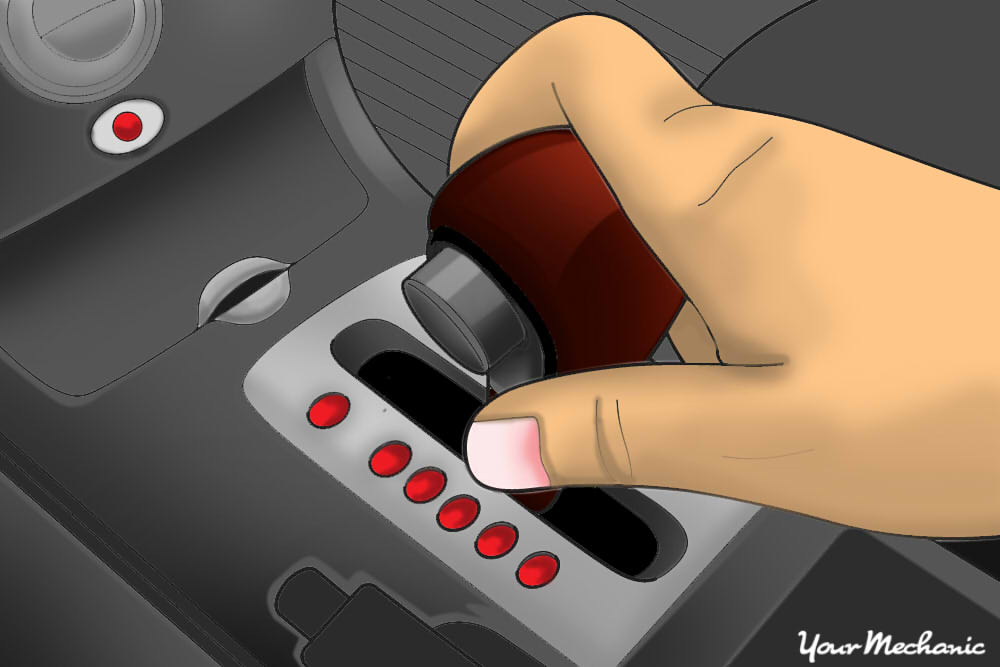
Step 1: Park on a level surface. The machine needs to be parked in order to cheque the fluid level, and so detect a level surface on which to park.
If the transmission has a manual gear selector (commonly i, 2, and three below "Drive" on the shifter) then it is a good idea to shift through each gear earlier shifting into "Park" and letting the engine idle.
- Note: The engine needs to exist running in order to be able to read the fluid level. Notation that some vehicles specify having the manual in Park and the engine running and others may specify the transmission exist in Neutral with the engine running to cheque the level of the fluid.

Step 2: Open up the hood. To popular the hood, at that place is usually a switch inside the car that pops the hood upward a small amount and in that location is a lever on the front of the hood, usually accessible through the grille, that needs to be pulled in order to raise the hood.
- Tip: If the hood does not stay up on its own, wait for a metal bar that hooks into the underside of the hood to agree it upward.

Step three: Find the transmission fluid pipe. Under the hood, there is an automatic manual fluid pipe. This is usually fairly out of the way, and then expect to search for a moment before locating information technology.
The vehicle'south manual volition show exactly where it is, just if that is not bachelor, here are some tips for finding the automatic transmission fluid dipstick:
The dipstick will accept some sort of handle to pull on in society to remove it from the pipe, so look for that outset. It may or may not be labeled.
If the vehicle is a forepart-wheel bulldoze, the dipstick volition exist up in front of the engine. If the vehicle is rear-wheel drive, the dipstick will probably be towards the rear of the engine.
It may be difficult to pull up at offset, merely don't strength it.
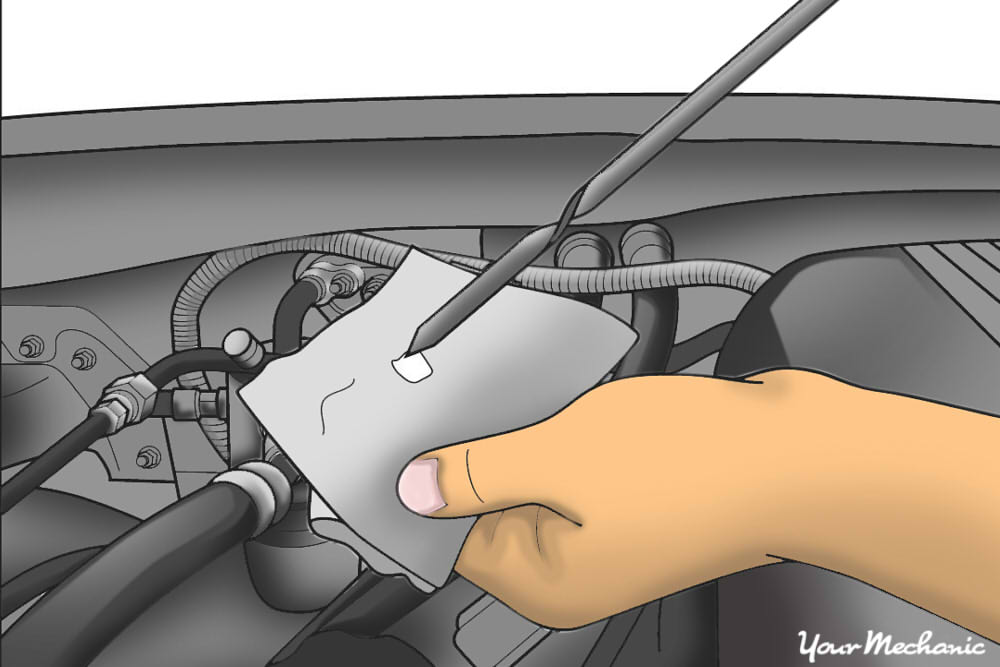
Step 4: Pull out the dipstick. Get a rag or paper towel ready before pulling the dipstick out all the way.
When pulling it out, employ your free paw to grip the dipstick with the rag and make clean the fluid off of it. To cheque the level accurately, re-insert the dipstick all the way and pull it out.
There are two lines or marks on the dipstick labeled either; "Hot" and "Cold" or "Full" and "Add together."
The fluid needs to at to the lowest degree be between these two lines. If it is below the lesser line, and so more fluid needs to exist added. Betwixt the add and full line on almost small to mid size vehicle manual dip sticks volition equal about a pint of fluid.
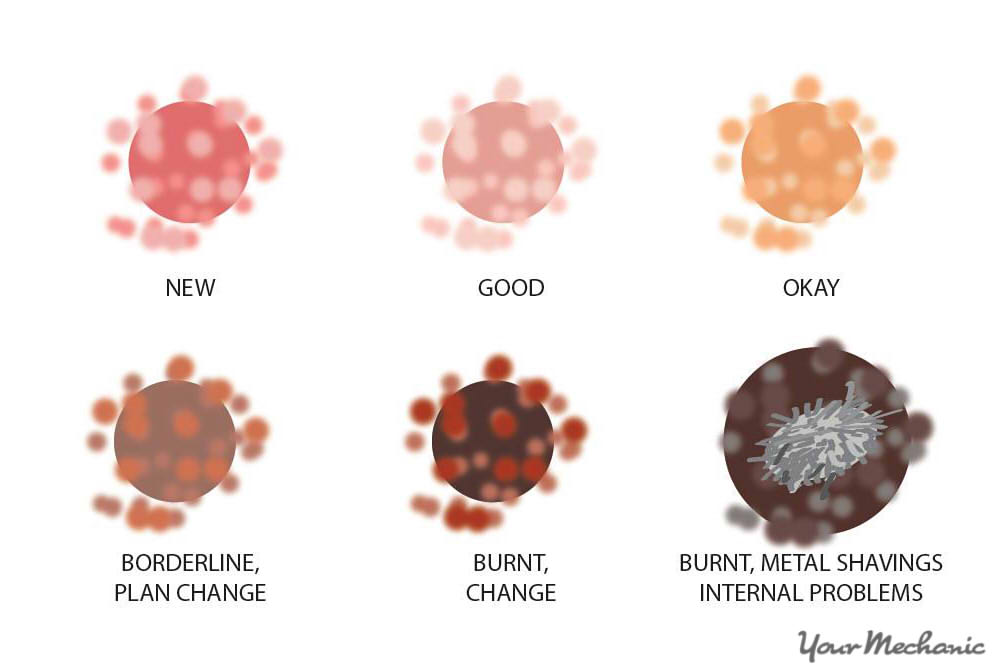
Earlier calculation whatsoever fluid, take a moment to inspect what the bodily fluid looks like. It information technology commonly a clear amber color, simply some types are more brown and some are more red. Picket out for fluid that looks dark or any fluid that is not very clear. If it is too dark it may exist burnt, and if the fluid is milky then information technology is contaminated. Also watch out for air bubbles.
Pace five: Address bug. Now is time to address any issues uncovered in the procedure of checking the fluid.
If the fluid is burnt, and so the radiator fluid needs to be flushed out as it is not going to adequately protect the parts inside of the transmission. If the fluid is burnt the transmission may need repairs and yous should seek the services of a professional mechanic.
Milky automatic manual fluid is contaminated and is possibly a sign of other problems. Shut off the vehicle and call a mechanic to avoid serious damages. If the fluid is milky the transmission may demand repairs and yous should seek the services of a professional mechanic.
Air bubbles indicate that the fluid may not exist the correct type for the transmission, but are also caused by there being too much fluid in the manual.
- Alarm: If the incorrect fluid is put into the transmission information technology could cause internal harm to the system.
Function ii of ii: Adding transmission fluid
Materials Needed
- Automatic transmission fluid
- Funnel
Pace one: Go the correct type of fluid. In one case you have established that the manual needs more fluid to be added to it, and so you need to obtain both the proper blazon of transmission fluid for your vehicle (the vehicle's transmission volition specify) and a long, sparse funnel to assist in adding it to the existing fluid.
- Warning: Do not add together fluid if information technology is not the correct blazon. Some dipsticks will say the correct fluid if you do not have an owners transmission.
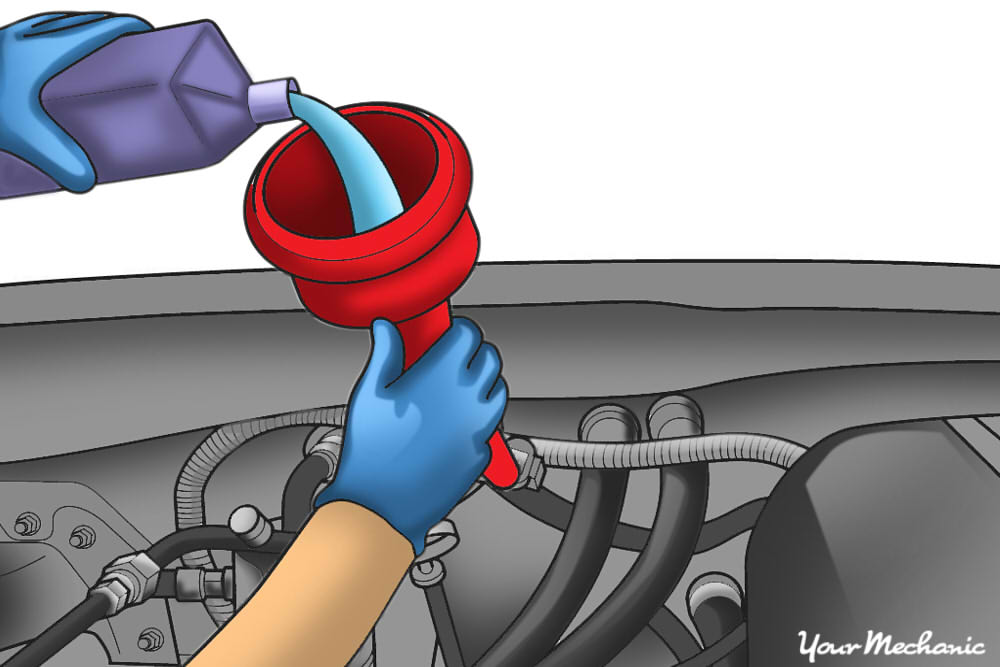
Step 2: Add fluid through a funnel. You can add together more by inserting a funnel into the tube the dipstick was withdrawn from and pouring a small amount of automatic transmission fluid into the pipe.
Check the level each time yous add a petty until the level is right between the two lines.
- Note: Add together fluid while the engine is running in the proper gear for checking the fluid levels.
If the transmission has been tuckered, you will need four-12 quarts of fluid to fill it back up. Follow the vehicle service manual for the recommended type and amount of fluid to use.
If the fluid is very low when it is checked, and so add more fluid and look closely for any leaks. Low fluid may be a sign that fluid is leaking out. Expect to add most a pint before checking the level again.
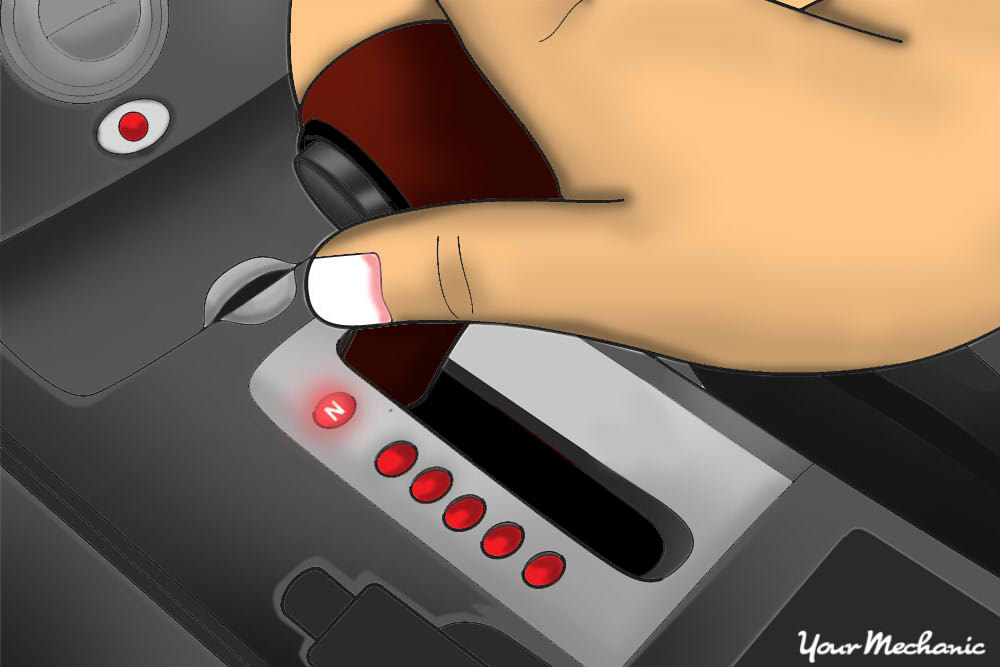
Step iii: Go through all the manual settings. If at that place are no leaks and the fluid is at an adequate level, get back behind the bike (but go on the hood open) and, with a pes on the restriction, take the transmission through all of the settings on the transmission. This will stir around the fresh fluid and allow it to coat all of the parts in the transmission.
Footstep 4: Check the dipstick. Make certain the fluid level is right even after shifting the transmission through all of the settings. Add together more if the level has dropped too far.
Proper transmission maintenance volition keep your car running polish, and it will stay that way for many more miles than i with a neglected manual would. The merely thing keeping all of the very precise parts inside of the transmission lubricated is the automated manual fluid, and routinely checking on the level and adding fluid if it is needed is a good practise.
If y'all would rather have a professional person mechanic, such as ane from YourMechanic, add your manual fluid for you at your dwelling house or part.
The statements expressed above are simply for informational purposes and should be independently verified. Please come across our terms of service for more details
How To Tell How Much Transmission Fluid To Add,
Source: https://www.yourmechanic.com/article/how-to-check-and-add-fluid-to-an-automatic-transmission
Posted by: rosadotorty1998.blogspot.com


0 Response to "How To Tell How Much Transmission Fluid To Add"
Post a Comment